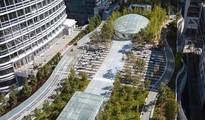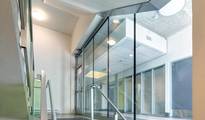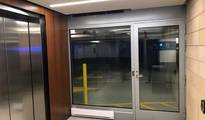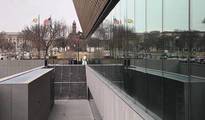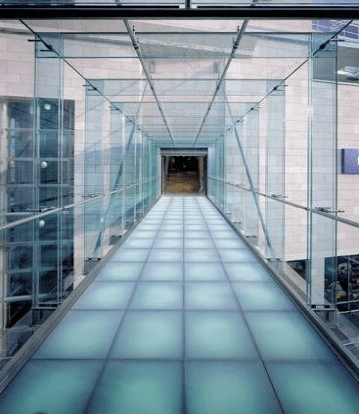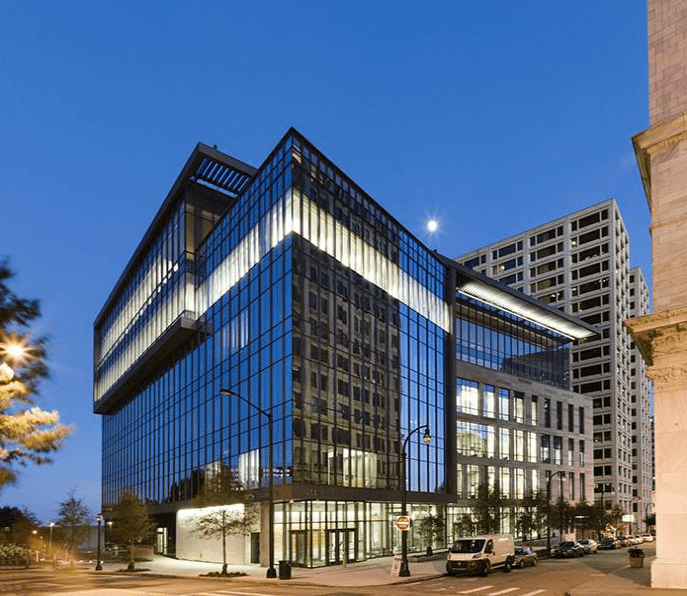Articles
March 27, 2019 Commercial Fire Safety Glass: Is It a Hot Commodity for Architects in 2019?
By 2024, the global fire resistant glass market will break through the $7.28 (USD) billion mark!
With such massive revenues, the commercial fire safety glass industry is on a tremendous upswing and shows no signs of slowing down anytime soon. But what does this mean for architects, designers, engineers, city planners and building safety inspectors?

More importantly, is this glass a feasible investment or just another passing fad?
A Great Fire Safety Plan Consists of 3 Main Elements
Detection
In a fire emergency, every second count. Detection gadgets are activated in the incidence of fire and act as a red flag to suggest that the indoor temperatures have risen above the accepted average, indicating a possibility of risk. They serve to warn occupants of the dangers close at hand. One of the most common detection devices is fire alarms, which include sensitive machinery that can even detect spot-type heat spikes and consequently trigger the alarm.
Suppression
Once the fire is detected, it’s time for your safety plan to spring into action. Suppression devices are instrumental in diffusing the threat as effectively as possible. These run the gamut from fire extinguishers to sprinklers, with the latter being automatically activated when it senses a temperature spike.
In many cases, simply having the above two tactics in place isn’t enough. There’s one major component that your fire safety plan is missing.
Compartmentalization
The best firefighter is resistive fire-rated safety glass. It does the often overlooked and unbelievably important job of compartmentalizing the fire, smoke, and radiant heat and keeping damages to a minimum.
Resistive fire-rated glass is a powerful ally in life safety. Ordinary glass is not nearly as rigid as required and will crack when faced with challenging temperatures. Resistive fire-rated glass, conversely, is engineered to tolerate temperatures that soar as high as 1700°F and these remain fire-rated for 60 to 120 minutes.
Commercial Fire-Rated Glass Offers Immense Protection
Commercial resistive fire safety glass is an integral component in construction, one that protects occupants and possessions from the hazards of a structural fire outbreak. Fire aside, even the smoke and radiant heat from a fire can result in significant dollar losses, not to mention fatalities. As you’re aware, fire travels quickly and is fueled by the availability of combustible materials in close proximity.
The resistive fire-rated glass acts as a barrier to block radiant heat, fire, and smoke from travelling within the enclosure, and essentially compartmentalizes the damage. That way, occupants will be able to safely chart out an egress route and firefighters are given more time to respond to emergencies.
Apart from its pragmatic aspects, resistive fire-rated glass also lends itself well to the visual appeal of the enclosure. How so? Well, it allows plenty of natural daylight to flood into the enclosure, creating a warm and vibrant atmosphere.
Fire-Protective Glass: This stops fire and smoke (but not radiant heat) from moving between different rooms or levels in your facility. There is still a danger of items spontaneously combusting when exposed to radiant heat, even if the glass separates these items from the fire.
Fire-Resistive Glass: This impedes the movement of fire, smoke, and radiant heat and is the most comprehensive commercial safety glass. It is created from multiple glass layers divided by intumescent resin sublayers.
Is laminated glass fire rated? Laminated glass can also be engineered with fire-rating properties so that it passes the required safety parameters. Moreover, the laminated facade enables it to provide added security against forced entry.
Is tempered glass fire resistant? Absolutely. Tempered glass is expertly designed and extensively tested to tolerate temperatures in excess of 450°F. They are more robust than annealed glass of the same size and thickness. Because of this impressive thermal strength, tempered glass is one of the leading safety glass options in the industry. However, it can break easily from thermal shock.
Updated Building Safety Codes: Are You Compliant?
Because of its propensity to protect, resistive fire-rated glass has become a mandatory component in municipal building safety codes. These regulations also specifically detail where and how it is to be used.
Ordinary glass has low-tolerance and low-resistance – two factors that can be life-threatening when a structural fire is concerned. This is why updated building safety regulations have eliminated the use of conventional wired glass, particularly in hazardous areas such as sidelights, doors, balconies, stairwells, windows closer to the floor, and egress areas.
Fire-Safety Glass is Used Extensively in These Industries
Fire-rated safety glass is our lifeline in 2019. The scope of its application is growing to make this glass a hot commodity in a variety of industries.
The marine industry has found immense use in this glass, particularly because it provides fire safety and impact safety. The need for fireproof cabins on ships in naval and commercial applications is one of the major drivers that necessitate such an investment.
Automotive manufacturers aren’t far behind in the bid to invest in commercial fire-safety glass. Consumers have expressed a demand to have their vehicles reinforced with the proper safety standards. As such, these demands will substantially elevate the integration of fire safety glass in all aspects of the consumer experience, not just their cars.
Nothing accentuates the importance of safety more than hospitals and medical facilities. These buildings must adhere to the strictest federal safety requirements to keep occupants as far away from risk as possible. Since these institutions witness heavy traffic at all hours of the day, building safety codes have incorporated very specific construction and layout parameters that must be abided by.
Transit facilities, much like hospitals, also witness a tremendous amount of foot traffic, perhaps even more so. Apart from the vehicles that are responsible for transporting passengers, the stations and terminals themselves must also incorporate fire safety glass.
These provide impressive fire rating properties, seismic resistance and live loading for foot traffic as well as waterproofing to mitigate associated risks.
Commercial enterprises like high-rises, corporate offices, shopping malls, and warehouses also find great use in fire safety glass, owing to the fact that the house occupants as well as valuable items that, if damaged, will result in huge dollar losses.
Apart from protecting those involved from radiant heat, fire, and smoke, fire safety glass also ushers in plenty of natural lighting, thereby reducing the carbon emissions produced by artificial lighting.
Are You Missing Out on the Benefits of Fire-Rated Safety Glass?
This glass is instrumental in protecting your possessions and your property from a fire outbreak. Moreover, it also affords impressive insulation properties that keep your interiors comfortable throughout the year.
LITEFLAM is a proprietary fire-rated glass system engineered by Greenlite. Used since 2006 and incorporated in over 100 projects worldwide, this advanced glass floor system has fire-ratings from 1 to 2 hours – the only exterior glazed system with an insulated glass assembly for North America.
Need a FREE quote or more information?
Contact us today by doing one of the following:
1. Call us at +1 778 285 8530
2. Fill out the form below
3. Send an email to info@greenliteglass.com
Our industry professionals would love to help!






